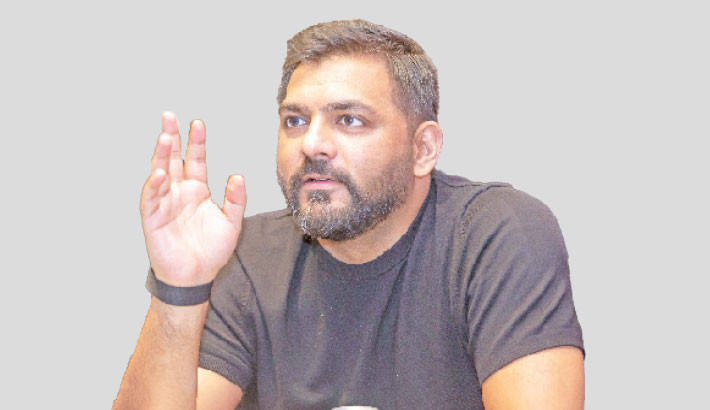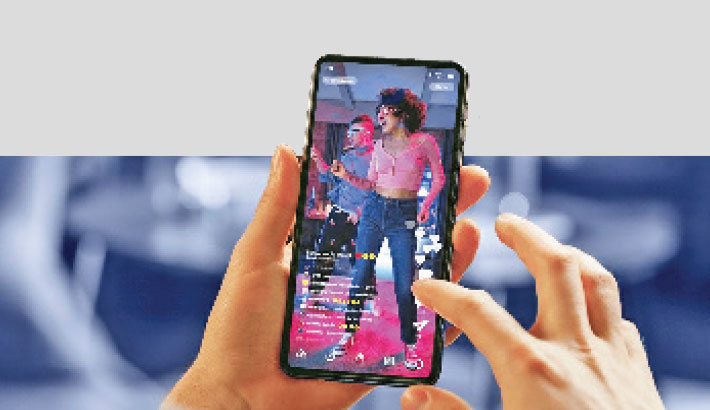OPINION
How short videos redefine content creation and consumption
Umais Naveed
Published: 16 Nov 2025

Some 20 years ago, publishing meant schedules, studios and scarce shelf space. Today, the centre of gravity is the smartphone, and attention moves with the speed of a swipe. What changed is not only distribution, but the very relationship between a content creator and audience has been recast, and the most durable ideas now travel as formats that people can copy, adapt and make their own. Short video sits at the heart of this shift. It has given everyday creators a clear, repeatable grammar and given audiences a way to take part, not only to watch.
From production to participation
If we look at the evolution of how content evolved, we see that video has moved from appointment viewing on television to long clips on desktops, then to mobile-native stories that live in the hand. Each stage lowered the barrier to making and sharing, and tightened the distance between an idea and its audience.
When short videos arrived as a phenomenon, it accelerated that journey. It made the opening second decisive, pushed creators to show rather than tell, and rewarded formats that invite a reply. Comments became a writers’ room. Duos, side-by-side responses and layered replies turned single voices into conversations. The result is a culture where participation drives reach, and where audiences help shape the next instalment.
Short video is not a cut-down version of something longer. It is a form with its own rules. Vertical framing matches how people hold their phones. Captions carry meaning when sound is off and guide the eye when sound is on. On-screen text, stickers and simple visual markers create choreography for learning. Pacing is purposeful, with a clear promise up front and a tidy payoff before attention drifts. The best short videos feel complete on their own, yet belong to a series, which allows ideas to compound over time. This is why small moments can build recognisable characters, formats and communities without studio scale.
Video or text?
Audiences choose video because it compresses meaning. Facial expression, tone and rhythm carry information that prose must unpack line by line. A good opener shows the outcome before it explains the method, which helps the viewer decide to stay. Demonstration beats description. A cooking tip, a fitness cue or a product walkthrough lands faster when you can see the move and hear the emphasis. Video also reduces effort. It asks for a few seconds to prove its value. If the promise is clear, attention follows; if not, moving on costs nothing. That reality places a premium on clarity of concept and economy of execution.

There is an emotional reason too. Faces build trust and pace builds momentum. Music and sound effects set mood before a word appears on screen. Communities form around that shared feeling. Jokes develop a house style. Tutorials build a shared vocabulary. Viewers see people like themselves succeeding and feel invited to try. That sense of proximity turns passive watching into participation and participation is what gives formats their staying power.
Text has its place for depth and reference, yet video matches how people now discover, learn and share in the flow of daily life.
Community as cultural infrastructure
Digital communities now form around cuisines, crafts, comedy, fitness, film trivia and countless micro-interests. These are not fan clubs. They are creative ecosystems where formats evolve in public. The most effective organisations and creators learn the codes of a community before speaking within it. They amplify what fans are already doing, credit originators and invite the next contribution. When a community feels seen, it repays with ideas as well as attention. Short video is the ideal medium for this exchange because it is quick to make, easy to adapt and designed to be remixed inside the conversation.
South Asia’s digital culture is multilingual, intergenerational and proudly local. Street-level stories travel across borders when they are told with specificity and generosity. Regional music, food traditions and humour find global audiences because they invite participation from anyone with a camera and a point of view. As connectivity and creative tools improve, more voices enter the conversation. The region sets formats that others adopt, and short video serves as the bridge between local detail and global reach.
The next chapter
Short video has shifted culture from consumption to contribution. It has turned audiences into collaborators, helped local stories travel with confidence and brought education, entertainment and commerce into the same everyday space. The practical impact is visible in how people learn new skills, discover small businesses, rally around causes and find communities that feel like home. When video respects attention and invites participation, it creates durable value for viewers, creators and organisations alike.
The next chapter will be defined by trust, accessibility and inclusion. The most resilient creative ecosystems will be those that give people clear rules, easy tools and a safe environment to express them. Local languages, captioning and thoughtful onboarding will continue to widen the circle of participation. Communities thrive when they feel seen and when credit is given fairly. That is how formats strengthen and how new voices emerge.
Craft will matter more, not less. Series-based storytelling, clear openings, purposeful pacing and simple prompts that invite a response will separate memorable work from background noise. Success will be measured by the quality of attention earned and by the number of people who feel confident enough to try the idea themselves.
South Asia, particularly Bangladesh, has the scale, range and creative instinct to lead this future. If we keep building formats that people can adopt, adapt and pass on, we will move the conversation from views to value and from moments to momentum.
That is the vision to work toward, and it is within reach.
____________________________________________
The writer is content operations lead, South Asia at TikTok

